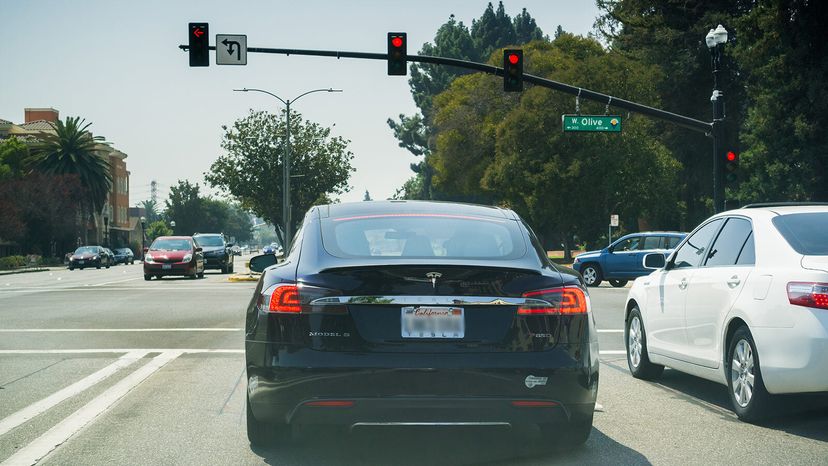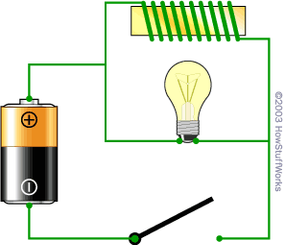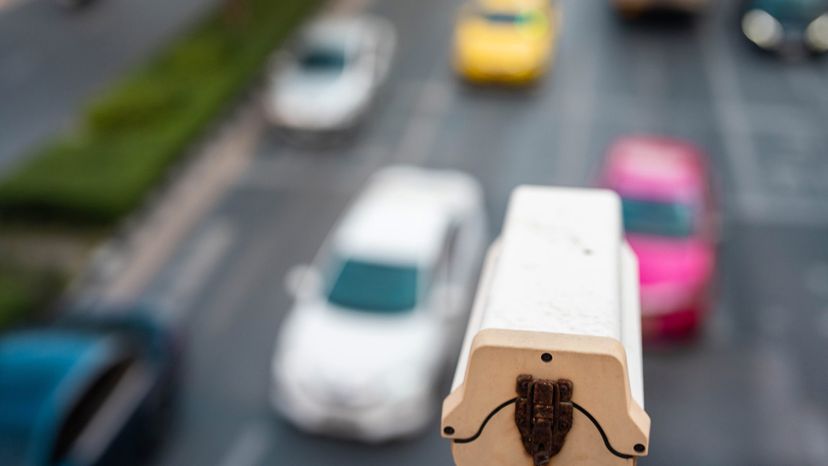
Has this ever happened to you? You pull up to a red traffic light and it changes to green in a few seconds! How did it detect your presence? Or maybe you've had the opposite experience: You sit at a traffic light for what seems an enormous length of time with no change.
Some lights don't have any sort of detectors. For example, in a large city, the traffic lights may simply operate on timers — no matter what time of day it is, there is going to be a lot of traffic. In the suburbs and on country roads, however, detectors are common. They may detect when a car arrives at an intersection, when too many cars are stacked up at an intersection (to control the length of the light) or when cars have entered a turn lane (in order to activate the arrow light).
Advertisem*nt
Traffic lights commonly detect vehicles using digital sensors mounted on the lights themselves, or through an inductive loop embedded in the surface of the road. Both methods allow the traffic system to keep tabs on stopped vehicles occupying the intersection and help traffic to flow smoothly. However, they achieve this in very different ways.
Contents
- What Are Inductive Loop Systems?
- Other Types of Traffic Light Sensors
What Are Inductive Loop Systems?
To install an inductive loop, workers lay the asphalt and then come back and cut a groove in the asphalt with a saw. The wire is placed in the groove and sealed with a rubbery compound. You can often see these big rectangular loops cut in the pavement because the compound is obvious.

Inductive loops work by detecting a change of inductance. To understand the process, let's first look at what inductance is. The illustration on this page is helpful.
Advertisem*nt
Here you see a battery, a light bulb, a coil of wire around a piece of iron (yellow), and a switch. The coil of wire is an inductor. The inductor is an electromagnet.
If you were to take the inductor out of this circuit, then what you have is a normal flashlight. Close the switch and the bulb lights up. With the inductor in the circuit as shown, the behavior is completely different. The light bulb is a resistor (the resistance creates heat to make the filament in the bulb glow). The wire in the coil has much lower resistance (it's just wire), so you'd expect when you turn on the switch that the bulb would glow very dimly. Most of the current should follow the low-resistance path through the loop. What happens, instead, is that when you close the switch, the bulb burns brightly and then gets dimmer. When you open the switch, the bulb burns very brightly and then quickly goes out.
The reason for this strange behavior is the inductor. When current first starts flowing in the coil, the coil wants to build up a magnetic field. While the field is building, the coil inhibits the flow of current. Once the field is built, then current can flow normally through the wire. When the switch gets opened, the magnetic field around the coil keeps current flowing in the coil until the field collapses. This current keeps the bulb lit for a period of time even though the switch is open.
A traffic light sensor uses the loop in that same way. It constantly tests the inductance of the loop in the road, and when the inductance rises, it knows there is a car waiting.
Inductive loop systems are commonly used thanks to their simplistic nature. There's much less chance of a breakdown compared to expensive and complex digital sensors, but this simplicity can also be a drawback. All the induction coil "knows" is whether or not a car is currently parked on top of it. This is the main reason that the light may fail to change in a timely manner if a car doesn't pull all the way up to a stop.
Lighter vehicles like motorcycles may also fail to trigger the inductor with their weight alone, making them a hassle for bikers during low-traffic hours. Digital sensor systems do away with these problems, and they allow transportation authorities to log countless hours of traffic data that can be used for future planning of routes and city projects.
Advertisem*nt
Other Types of Traffic Light Sensors

In addition to induction methods, you may see traffic lights employing a variety of advanced sensors for vehicle detection. These are typically installed near the lights, and don't require any laying of metal inside the road. Sensing methods you may encounter include infrared sensors, microwave beam emitters, and video cameras.
Infrared sensors come in "active" and "passive" varieties. An active system shoots out a beam of infrared light that stops just where a car might be during a red light. When a vehicle pulls up, the beam is broken and the sensor is able to detect that the space is occupied. (Emergency vehicles like ambulances and police cars have active sensors that can request a traffic light be changed, usually when their lights or sirens are on.)
Advertisem*nt
Passive sensors instead use their infrared sensing to detect the heat that comes off a car's engine. However, other intense heat sources like direct sunlight can cause the system to see false positives.
A microwave sensor works similarly to active infrared, but instead generates a magnetic field around itself. When vehicles enter the field, they disturb it and cause changes in the waves. The sensor is then able to detect these changes and see the vehicle. Microwave emitters are relatively expensive, and don't have the heat contamination issues that you may see in infrared.
Video camera systems are the most complex we see in traffic lights, but also have the potential to be the most effective. Installed on the lights are multiple cameras, similar to those would see on a CCTV installation. These cameras allow multiple, maybe dozens, of traffic stops to be networked together.
They all talk to a server running software designed to identify vehicles, and count the number of them at a stop in real time. It may also be able to distinguish cars from pedestrians. The network takes in all this data and then attempts to run the series of lights at maximized efficiency. Long-term analytics can then be used to improve the system further or figure out where roads need to be modified. However, weather conditions like fog can seriously hinder the cameras' vision.
In order to ensure that traffic stays moving, lights are often installed with two types of sensors, or a sensor plus an inductive loop. If one type of detection becomes infeasible due to outside conditions or a hardware failure, the system is able to fall back on another and avoid a major traffic nightmare.
Advertisem*nt
Traffic Light FAQ
How does a traffic light work?
There are two ways in which traffic lights work. In big cities, the traffic lights usually operate on timers, as there is a lot of traffic consistently throughout the day. However, in the suburbs and on country roads, traffic lights use detectors. They detect vehicles arriving at an intersection when too many cars are stacked up at an intersection. This detection mechanism controls the duration of the light. It also activates the arrow light when cars have entered a turn lane.
How do traffic lights know when a car is there?
There are different technologies that are used by traffic lights for detecting cars. However, the most common technique is the inductive loop, which is embedded in the road's surface.
Does a computer control traffic lights?
Sometimes, traffic lights are centrally monitored and controlled by computers to coordinate traffic lights in real-time and deal with changing traffic patterns. Timers or sensors are also used to manage traffic flow across a city.
How does a traffic light circuit work?
First, a coil of wire is placed in the grooves with an inductance meter attached to the coil to gauge the coil’s inductance. A traffic light constantly tests the inductance of the loop in the road. When a car arrives in the loop's magnetic field, it increases the inductance, telling the traffic lights that there is a car waiting.
Lots More Information
Related Articles
- Why Syncing Traffic Lights May Not Reduce Congestion
- How Red-light Cameras Work
- How Electromagnets Work
- How Inductors Work
- Can your car tell you when the light's about to change?
- How Parking Garages Track Open Spaces, and Why They Often Get It Wrong